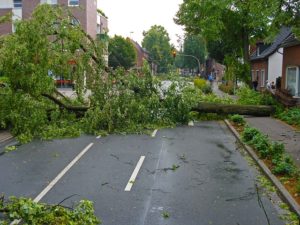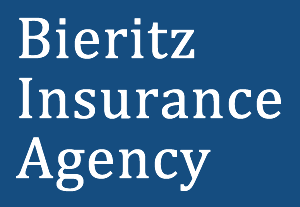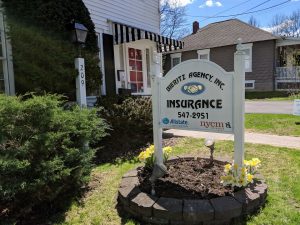Storm Season Driving Safety
 Most of the summer months are dedicated to storm season. In between the days that are perfect for the beach, with blue and yellow skies, are days full of heavy rain, winds, and flooding, with the occasional–for Upstate New York–hailstorm, tornado, and hurricane. These weather conditions, in combination with increased vacationing travel, road work, and presence of motorcycles and bikes on the roads, contribute to a higher average of fatal accidents taking place in the summer rather than the winter. At times like these, we find ourselves wanting to know how we can maximize driving safety. Below, you will find a list of summertime storm hazards, and ways you can alter your driving to better ensure safety in each of them.
Most of the summer months are dedicated to storm season. In between the days that are perfect for the beach, with blue and yellow skies, are days full of heavy rain, winds, and flooding, with the occasional–for Upstate New York–hailstorm, tornado, and hurricane. These weather conditions, in combination with increased vacationing travel, road work, and presence of motorcycles and bikes on the roads, contribute to a higher average of fatal accidents taking place in the summer rather than the winter. At times like these, we find ourselves wanting to know how we can maximize driving safety. Below, you will find a list of summertime storm hazards, and ways you can alter your driving to better ensure safety in each of them.
But first, here are a some general staples for driving in severe weather:
- Knowing the weather conditions and predictions for where and when you are traveling can help you mentally prepare for potentially unpleasant conditions.
- Planning a few back-up routes can also contribute to less stress.
- Limiting noise distractions from various devices and conversation can make room for more focus.
- You can always choose not to drive at all or to wait out the storm off the road.
- Slowing down and increasing the travel distance between surrounding vehicles can minimize the threat of hydroplaning and can allow more comfort, space, and time to react to traffic and road conditions.
- Cleaning your windows and checking your wipers once a month, checking the washer fluid once a week, and checking your lights and signals every day may be time-consuming, but it can contribute to feelings of ease during a drive if you don’t end up worrying about visibility–either your ability to see out of your windows, or your car’s ability of been seen.
- Newer cars may have front lights that engage when the windshield wipers are on, but the back lights don’t activate as well, so turning on the regular lights enables your vehicle to be seen from both directions.
Summertime Storm Hazards & Safety Tips
- Strong Winds – These can turn automobiles over, especially larger ones, or move them across lanes into each other or off the road.
- Winds may be more forceful in open areas, highway overpasses, tunnels, and tunnel-like spaces such as between mountains, so it may be helpful to know and stay alert in these areas. .
- While driving, locate and try to maintain distance from larger vehicles and motorcycles.
- Hold steadily onto the wheel, especially if you are occupying a larger vehicle.
- Heavy Rain – This can inhibit visibility and threaten your control over steering and braking if there is enough water and you start to hydroplane
- If you wait for a half hour after the rain begins, the oils and dirt that may have made roads more slippery for hydroplaning will have dissipated.
- Try to follow in the tracks of the car ahead of you to reduce the likelihood of hydroplaning.
- Avoid making fast turns and stops. Don’t use cruise control because you can’t reduce speed to keep traction by taking your foot off of the acceleration.
- If you hydroplane, steer in the direction you want to go, and don’t step on the gas or the brakes until you have regained control over steering. For more on recovery from hydroplaning, see our article on Driving Safely in the Fall and Winter Months.
- Hail
- Get off the road completely.
- Don’t leave your car, and wait for the storm to end.
- Moving Water – This could cause you to hydroplane, run over hidden dangerous debris like power lines, and it could cause your engine to stall if it brushes up against water.
- Don’t drive through more than 3 inches of water.
- Drive slowly.
- Turn around and find a detour.
- Hurricane – In addition to much of the above, remember to keep your gas tank full so you don’t end up stranded. Keeping first-aid supplies, clothing, water, and snacks in your car can be of help in the event that you are.
- Tornado – These debris-wielding, strong, and rotating winds can do an enormous amount of damage.
- Seek indoor shelter first.
- Otherwise, get off the road completely.
- Stay away from bridges and tunnels because the wind may be more powerful there.
- If you can’t safely reach an area that is lower than the road, stay in your car, belted in, with your head below the windows and covered by your hands and a blanket, if you have one.
- If you can safely get to a place that is lower than the road, lie there with your hands over your head.
So much in life is unpredictable. Tornadoes and hurricanes may not be so prevalent in Upstate New York, but our summer travels take us everywhere, and we’ll never know when situations will call for us to use what we’ve learned. We can also never be certain that what we’ve learned will fully protect ourselves in such conditions. In the aftermath, insurance can support you, wherever you are. Request a quote on automobile or life insurance from the team at Bieritz Insurance Agency today!

